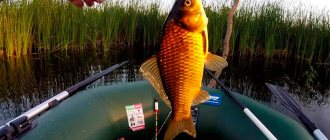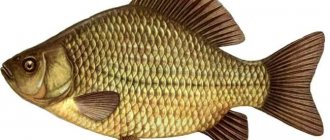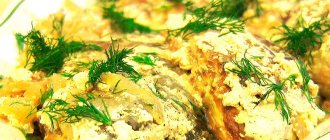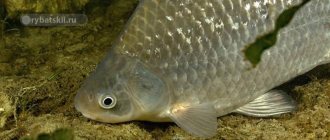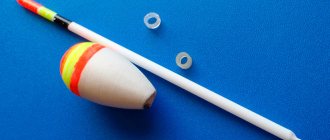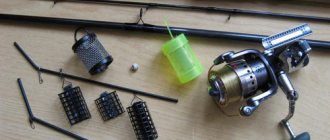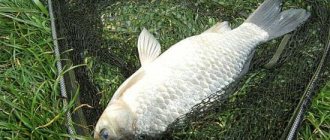Without semolina porridge, not a single experienced fisherman will go out to the pond. In summer, spring and autumn, when fishing in open water, almost all white fish bite on semolina, preferring it to other baits. Semolina is easy to prepare for fishing, but there are secrets for each fish.
The rudd, silver bream, crucian carp and even the bream living in lakes, reservoirs and ponds are especially not indifferent to it. River “residents” are more selective.
In addition to its own bait, semolina is added to dough, bait, and fishing porridge. As part of mixtures, it compacts the structure due to its high gluten content and is indispensable for preparing “indestructible” bait, which is popular in the fishing community.
It has been noticed that in reservoirs where fish are often fed with complementary foods when fishing with a feeder, or baited with cereals, they are more willing to take semolina baits.
There are a lot of fishing recipes - from simple to unusual. But the cooking principle and basic ingredients are still the same. Semolina and water. Next - the fantasies or experience of the fisherman.
Here are the most successful, in the opinion of the site editors, and proven recipes for preparing semolina for fishing.
Semolina bait for fishing
In first place is semolina mash. This is the simplest and fastest attachment. Semolina chatter can be made directly while fishing. How? Read on...
Cooking time does not exceed 20 minutes. All you need is semolina and water. The minimum amount of work is to wait and interfere. Now step by step.
- Take a small container and pour in the cereal
- Add water, let stand for five minutes
- Take a teaspoon, or a stick if traveling, and mix
- Wait a few more minutes, stir again, and so on for 3-4 approaches.
- The finished mash should be viscous and stretchy
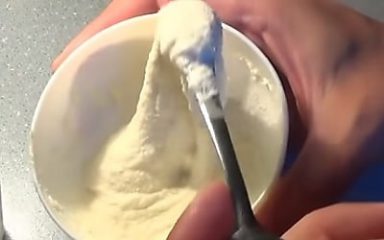
The main thing is not to overfill the water, otherwise the chatterbox for fishing will be too liquid and will not acquire a viscous consistency. For accuracy, it is better to use a tablespoon.
Proportions 1 tbsp. level spoon of cereal per 1 tbsp. spoon of water.
If desired, you can add flavoring - garlic for crucian carp, vanilla for rudd and silver bream.
Types of baits
You can make not one, but several different baits from semolina. They need to be used depending on the type of fish that the fisherman wants to catch. Crucian carp, for example, with all its capriciousness and unpredictability, is very fond of chatterbox, so you definitely need to know how to prepare this type of bait.
Chatterbox
The chatterbox is a favorite bait of many fishermen. The basic mash recipe requires several steps.
- Pour 50 grams of semolina into a glass bowl - this is about half a glass;
- The cereal needs to be filled with water. Water must be of high quality, free from impurities and foreign odors. Boiled, mineral and tap water cannot be used. Filtered will do. You can also buy a canteen in the store.
- Water should cover the cereal by 3-8 mm.
- The mixture of cereal and water should be mixed with a spoon and set aside for about 20 minutes, during which time the semolina should absorb water and swell.
- After 20 minutes, you need to start stirring the semolina. This needs to be done for a long time and actively. Quite quickly, the semolina will change its consistency, it will become viscous and begin to form sticky threads.
- You need to stir the mixture for 15-20 minutes.
- The mash should be quite thick. If the thread breaks immediately, you should add more semolina to the mixture.
- For convenience, the mash can be transferred into a syringe. To do this, use a regular medical syringe without a needle. You need to remove the piston from it, and put the mixture into the syringe itself with a spoon. After this, the plunger is placed back into the syringe.
- You can store the mash in the freezer or refrigerator. It is recommended to pack the bait in a sealed bag so that it does not absorb refrigerator odors.
- While fishing, the mixture is squeezed out of a syringe and wound onto a hook.
The threads of the chatterbox can quickly be carried away by the current, so it is better to use the bait in reservoirs with standing water. Crucian carp, roach, bream, etc. peck on the chatterbox.
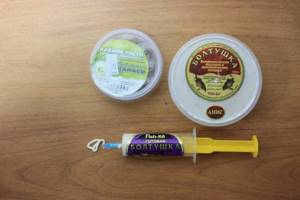
The basic recipe can be improved if you use a few simple recommendations:
- you can fill the semolina with honey instead of ordinary water; 0.5-1 teaspoon of honey will be enough;
- while shaking, it is recommended to add one finely chopped or pressed clove of garlic;
- if the mash will be cooked right during fishing, then it is better to take water directly from the reservoir;
- when preparing mash, you can add a small amount of ordinary cotton wool, torn into small pieces, to the mixture - the mixture will become stronger and will stick better to the hook;
- threads of chatter slowly dissolve in water, thereby attracting fish; in cloudy water, you can use a bowl of food coloring: red, blue, yellow or green.
Mastyrka
Another popular type of semolina bait. Mastyrka has a denser consistency, so it holds well on the hook even in places with strong currents.
A simple mastyrka recipe involves using semolina and water.
- Water must be poured into a saucepan and brought to a boil.
- Pour semolina into boiling water in a thin stream, while stirring the mixture continuously.
- You need to keep the mastyrka on the fire until it thickens and acquires a uniform texture.
- After turning off the heat, you need to stir the porridge for a while, then cover it with a warm towel or blanket and let it swell for another half hour.
- The mixture needs to be cooled and then kneaded with your hands.
- You need to knead the mastyrka like dough. If the mixture is too liquid, you can add a little semolina.
- To prevent the mastyrka from sticking to your hands (and also to give it a smell), your hands can be moistened with vegetable oil. One that has a strong, distinct odor will work well.
- The finished mastyrka needs to be rolled into balls. This semolina bait will stick well to the hook.
Mastyrka is often prepared from semolina and peas, because the smell of peas attracts fish well.
To prepare mastyrka with peas, you first need to boil the peas. You need to add semolina when there is almost no water left in the pan. At the same time, the peas should not fall apart and turn into puree.
Instead of peas, you can use pea flour. It is very important not to forget to constantly stir the porridge, because if it burns, it will acquire an unpleasant odor, which means the mastyrka will be spoiled.
Add semolina in a thin stream and stir constantly. You need to add semolina until the mass becomes plastic.
You need to cook the mixture until it becomes thick and homogeneous. Sometimes egg yolks are additionally added to the mixture - this makes the bait higher in calories and more attractive to fish.
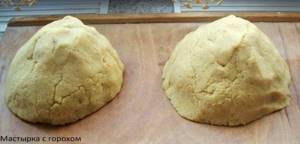
Mastyrka can be stored for up to three days. It must be packed carefully so that it does not dry out.
Sometimes the mastyrka can slightly change the consistency, so it is recommended to take a little grits when fishing to give the bait the necessary plasticity.
Semolina for fishing in a syringe
There is nothing complicated about the “special” semolina for the syringe.
This is the same semolina chatter, only for winding it on a hook, instead of a match or stick, a medical syringe without a needle is used.
How to prepare semolina for fishing in a syringe - watch the video.
There are two ways to fill a syringe with ready-made mash.
- First, take out the plunger and press the syringe itself into the semolina with a wide hole. Through the needle tip, suck the semolina into the syringe with your mouth.

How to quickly fill a syringe with chatter? It’s very simple, suck the semolina through the spout of the syringe with your mouth...
- The second, also removing the piston, using a spoon or stick, fill the cavity of the syringe with the nozzle.
How to hook
When choosing a hook, it is customary to focus on the size of the fish that live in certain bodies of water. Rods are used both as regular float rods and as those designed for donkey fishing.
The main selection criteria are as follows:
- the length of the forend is the same as the width of the hook or slightly longer;
- the color should match the tone of the reservoir;
- a shape specially designed to hold dough-like bait;
- models with springs and rings are suitable.
The process of placing semolina on a hook consists of the following steps:
- take the leash with the thumb and forefinger of your left hand, placing them at the head of the hook;
- with your right hand, take out the bait (directly with your fingers or using a stick, syringe);
- wrap the semolina stretch tightly around the hook, making 15-20 turns.
When winding, you should cross the threads, fixing the bait around the hook. It is also effective to alternate horizontal and vertical winding.
Mastyrka from semolina
Mastyrka is an attachment in which semolina binds the main ingredient - various grains: peas, oats, corn, etc.
The most popular among fishermen is the pea mastyrka. To prepare it, take peas and boil them to a liquid jelly. Then, stirring, add 10 ml of sunflower oil and add semolina. After about a couple of minutes, turn off the heat, cover the saucepan with a lid and leave to cool. Mastyrka, or semolina with peas for fishing is ready.
The proportions are as follows: for 200-250 grams of peas, take 150-200 grams of semolina.
The more semolina, the more elastic the mastyrka will be. Therefore, experienced fishermen, adhering to proportions, still pour decoys by eye.
What kind of fish can be caught with semolina?
Almost all white fish are caught using this grain.
When using semolina bait you can catch the following fish:
- crucian carp is a rather unpredictable fish in its eating habits, which almost reliably bites on semolina bait;
- ide;
- bream - can be caught well with mastyrka, as well as with baits with peas;
- roach - bites well in the spring, loves semolina baits prepared with the addition of worms, bloodworms or maggots;
- rudd;
- carp;
- carp - this fish is recommended to be caught in the heat and at great depths. Carp loves mastyrka, to which you need to add halva.
Rubber decoy
Another super bait invented by sports fishermen is a rubber or indestructible decoy. This bait does not fly off the hook. It can only be knocked down by a fish while fishing, or by the fisherman himself, removing the hook from his mouth.
Pour about half a glass of cereal onto a small handkerchief, collect it in a “bag” and tie it with thread. Place in boiling water for 4-5 minutes, then in cold water until completely cool.
Having untied the scarf you should see a semolina ball. If you break it, the semolina will be boiled on the outside and dry on the inside.
Next, mix this ball thoroughly with your hands. That's it, the indestructible decoy for fishing is ready.
How does it work? When the bait is lowered into the water, the dry grains generate dust, attracting the attention of the fish, while the boiled ones provide viscosity and tenacity on the hook.
Method for preparing sweet semolina bait for long-term storage
In a small deep cup, carefully crack 2 chicken eggs . Then add up to 100 ml of sweet syrup, fruit pulp or something like that. Everything is mixed thoroughly.
Next, semolina and flour (preferably soybean) are added in equal parts. Then is kneaded . The finished mass is immediately divided into small portions and rolled into balls .
The made pellets should be placed in a strainer and placed in a pan of boiling water for a few minutes. Finally, the balls are dried on a towel, so that they can then be placed in a cellophane bag and put in the freezer .
Semolina with garlic
The easiest way to prepare semolina with garlic for fishing is to add it to the finished mash, mastyrka, dough with semolina, etc. garlic flavor.
If you want to tinker, then you need to do this.
1 way. Take a clove of garlic, crush it in a garlic press and pour a glass of water over it. Leave for 1-2 hours. Next, prepare mash using this water.
Method 2. Squeeze the juice from several cloves using the same garlic press and add it 1-2 drops at a time to the finished nozzle.
The best and fastest way, of course, is to use either flavoring or juice. It is believed that the garlic smell attracts crucian carp. They catch it with a float rod using semolina with garlic.
Dough for winter fishing for crucian carp
It’s easy to make dough for crucian carp during the ice fishing season. Fish respond well to this bait during the thaw period at the end of winter and early spring in those reservoirs where crucian carp are active throughout the year. And this behavior of crucian carp is directly related to the high oxygen content in the water. The recipes themselves for winter types of mash are practically no different in the composition of ingredients from the options for open water fishing. Attention is paid only to the addition of attractants, which are added in minimal quantities, or even completely excluded from the recipe, making a bland product, tinted with dyes in rich red tones.
Semolina with revit
An unusual bait option for fishing is a decoy with revit. And it is very easy to prepare. You need to take 5-6 pills of vitamin “Revit”, put them in a deep plate and add 1 tsp. water.
Next, crush them with a mortar to a yellow thick liquid. That's all. Pour this liquid into the dough or mash and knead.
It is not known why fish sometimes bite on such a bait better than on a regular chatterbox. She is probably attracted to the yellow color in addition to the smell of semolina. Why Revit, and not ascorbic acid, undevit and other vitamins? Apparently, Revit uses a stable yellow dye, which is what homemade fishermen love.
Advantages and disadvantages of catching crucian carp using dough
Let's consider a number of significant advantages that the use of the test for catching crucian carp provides. After all, the angler must clearly understand the benefits of using this bait in comparison with other possible bait options. We have already mentioned the versatility of using bait, but I would also like to note the simplicity of its preparation.
The process of preparing the mixture does not require complex recipes and uses common culinary ingredients that are not very expensive. During preparation, without much difficulty, the bait can be equipped with a promising attractant at a given time and painted in a color attractive to fish. The bait applied to the fishing zone can quickly collect crucian carp, attracting them by the formation of cloudy spots when the plastic flour mass dissolves. In addition, the size of the bait can be easily adjusted and the size of the expected trophy, cutting off small crucian carp and the same small things of other types of fish by mounting a large dumpling on the hook.
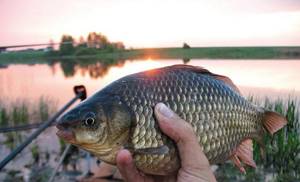
The disadvantages include the difficulty of securely attaching the bait to the hook, which requires the use of certain methods that require knowledge and additional accessories, as well as some nuances that arise when storing bait while fishing.
Fishing semolina in the microwave
To prepare the bait in this way, pour semolina in a plate with water so that it just covers it. Add flavoring if desired and leave for 10-15 minutes to swell.
Then place the plate in the microwave and cook until tender - 1-3 minutes, depending on the volume of semolina. It is important not to burn! Therefore, it is better to use a 30-second timer, periodically checking readiness. Next, cool and knead with your hands. This is how some craftsmen prepare semolina for fishing in the microwave.
Semolina gluten
To obtain gluten from semolina, no thermal treatment is required. The method is outrageously simple.
Need an old unnecessary women's :) stocking. We pour semolina into it and tie it to a water tap. We take as much cereal as we think is necessary. Turn on cold water and rinse under a gentle stream, periodically lifting and lowering the stocking with your palm. This way the semolina will be washed better.
You can do all this without stockings, with your hands. Pour water into the semolina in a plate and wait until it swells. Mix the cereal into a tight ball, and then rinse under running water.
As a result, the suspension of dust and small particles will go away with the water, and a mass resembling white rubber will remain in the stocking. This is gluten. Then we flavor it and go fishing. No one and nothing will rip such a bait off the hook.

